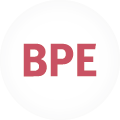Solving succession
Industries -EN
Generally, BPE invests in companies in a diverse set of industries. Nevertheless, three broad core segments were defined. These are determined by the experience gained over the past 25 years, the industrial structure of German ”Mittelstand” companies and the growth potential of a respective industry.
BPE primarily invests in companies from (1) traditional German industries, some of which are characterised by century-old traditions. Additionally, markets distinguished by (2) an above-average expected growth potential, due to changes in living conditions and consumer behaviour, are targeted.
Furthermore, BPE seeks (3) products or services that rationalize processes (Software, IT, IoT) or more traditional, established industries that are going through a (partially disruptive) transformation phase or simply are seeing an increase in growth opportunities due to the general trend towards internationalization and/or globalization.
The main focus
1. German “Mittelstand” competences
BPE focuses on profitable companies with established products in stable markets with above-average growth opportunities. Due to the constantly changing global economic environment caused by various megatrends, BPE concentrates on sectors in which German “Mittelstand” companies have unique selling propositions or (internationally) competitive advantages.
These typical German “Mittelstand” core competencies can be found in know-how specific and technology-driven companies, in addition to innovation-based industries with a strong focus on research and development. Particularly, sectors such as mechanical and plant engineering, chemicals and materials, or measurement and control technology benefit from these expertise. However, the German “Mittelstand” core competency of “managing complexity” is also important and additionally directs the focus towards the provision of complex industrial services.
Examples from the BPE portfolio
2. Economically induced growth markets
Global megatrends are creating considerable, profitable growth opportunities for German ”Mittelstand” companies. The emergence of a multipolar world is opening up new markets as well as export and globalisation opportunities. In addition to the “BRIC countries”, the “Next 11” encompassing (emerging) countries such as South Korea, Mexico and Turkey are of increasing relevance (see globalisation opportunities).
Another important megatrend is the current worldwide demographic change. Global population growth and the increasing scarcity of resources are driving demand for “sustainable” products and services, and this, in turn, favours and cultivates growth sectors, such as environmental engineering and technology related to “renewable energies” and “e-mobility”.
When it comes to rising energy and commodity prices, more mature industries are increasingly demanding German innovation, which is characterized by efficiency and effectiveness.
Rationalisation potential and process optimisation through digitalisation are some of the biggest challenges facing German “Mittelstand” companies and even the German industry as a whole. By harnessing the advantages of digitalisation, those companies that are willing to embrace technological change can tap into above-average growth opportunities and further unlock their hidden potential.
Moreover, the societal shift towards an older population that is prevalent in Germany and other industrialised nations, in addition to an increase in per capita income is highly beneficial for the medical technology sector, the health care sector and those areas that focus on quality of life, education and leisure activities.
Examples from the BPE portfolio
3. Opportunities for globalisation
Foreign trade relations are of exceptional importance for the German economy. The international interdependence of production chains, as described by the term “globalisation”, has also opened up considerable growth potential for German ”Mittelstand” companies. Those with a consistent internationalisation strategy benefit on two fronts: by opening up new markets (export orientation) and by exploiting comparative cost advantages by (partially) relocating the value chain to less wage-intensive countries.
The German “Mittelstand” companies with their traditional R&D strength and deep knowledge in innovative manufacturing processes could experience a renaissance, if they are able to successfully overcome the challenges of digital transformation. They will have to successfully utilise digital process transformation that increases efficiency to compensate any comparative cost disadvantages that may result from appropriate requirements for working conditions and environmental protection.
However, “Mittelstand” companies still have potential for improvement in this respect. A study conducted by the University of Göttingen in cooperation with the Institute for “Mittelstand” companies Research (IfM), Bonn, has shown that (1) German “Mittelstand” companies are already highly and increasingly active abroad, (2) and foreign involvement has a statistically significant positive effect on employment, sales growth and earnings. (3) However, they (still) generate a significantly higher share of value in their domestic market compared to large companies.
Additionally, German “Mittelstand” companies face a considerable (pent-up) need to advance the use of digitalisation in management, administrative and production processes.
Examples from the BPE portfolio

